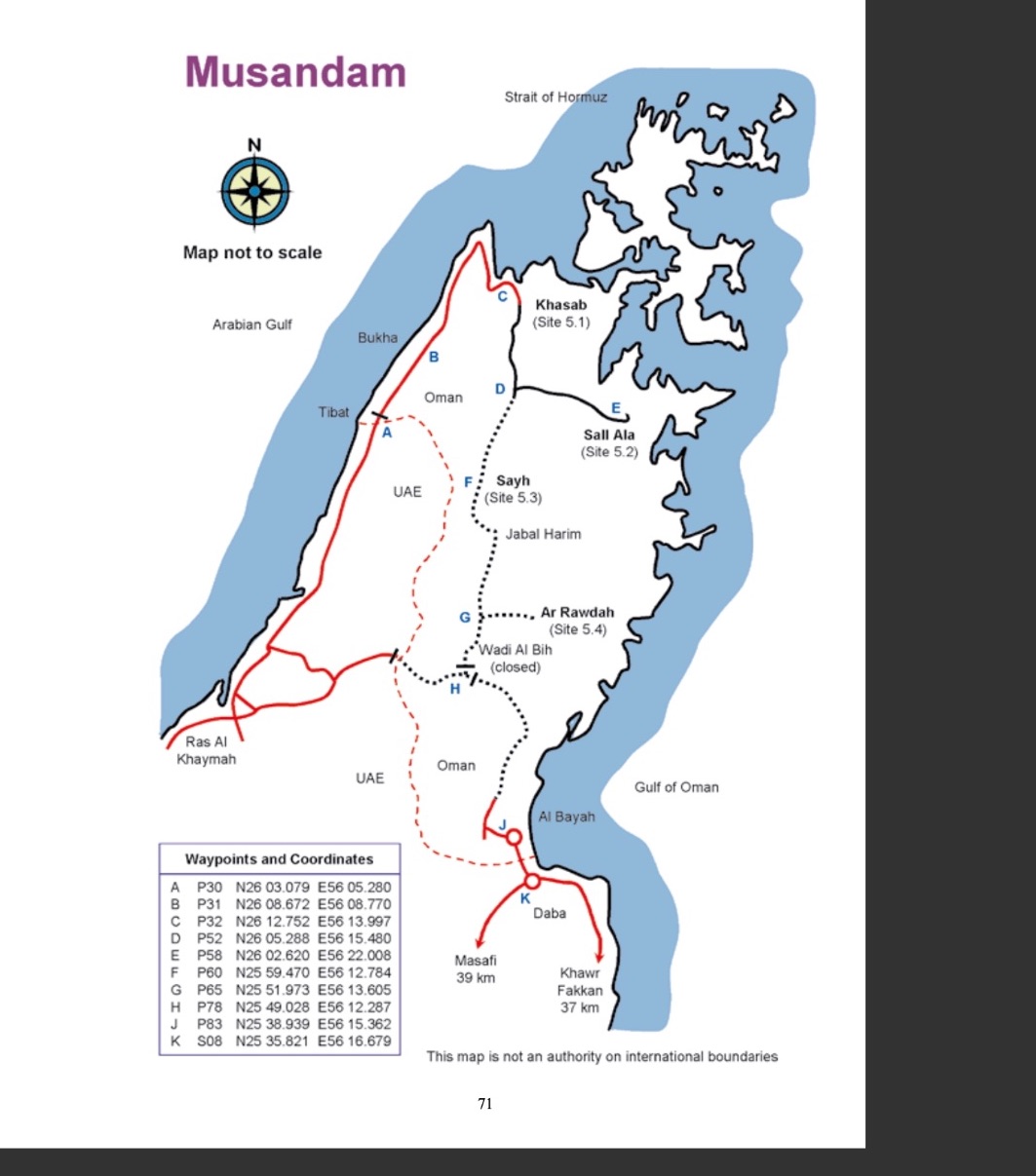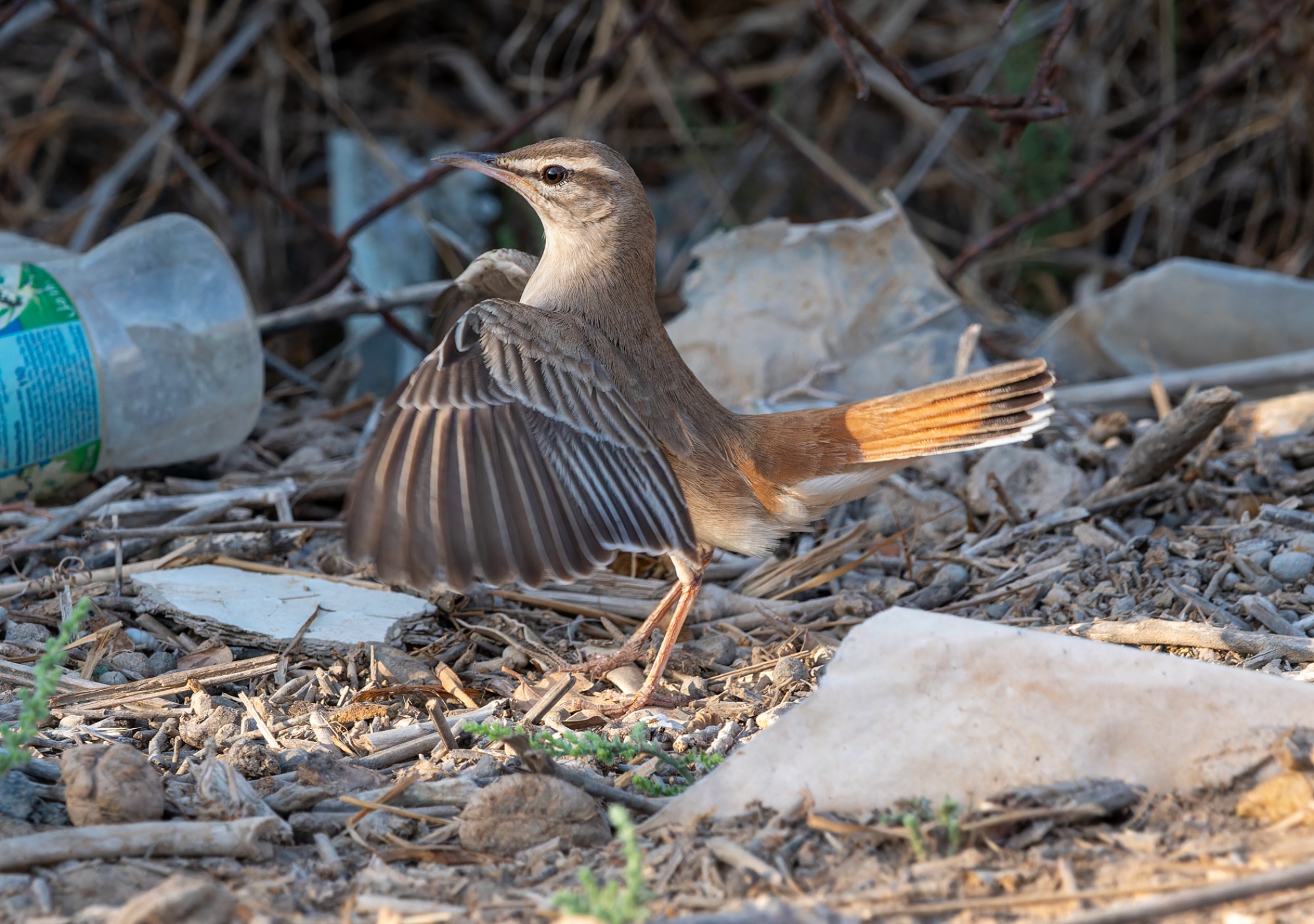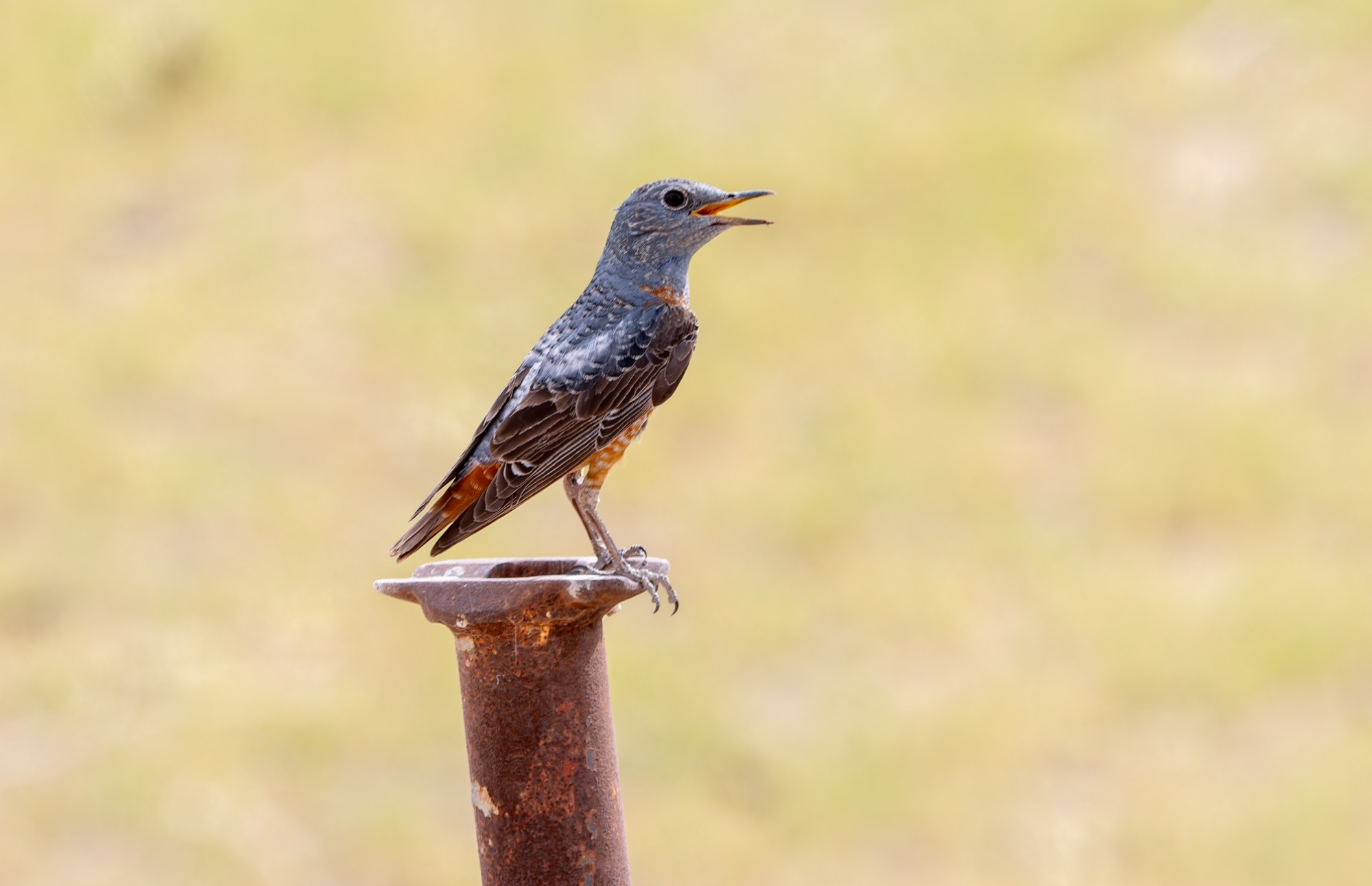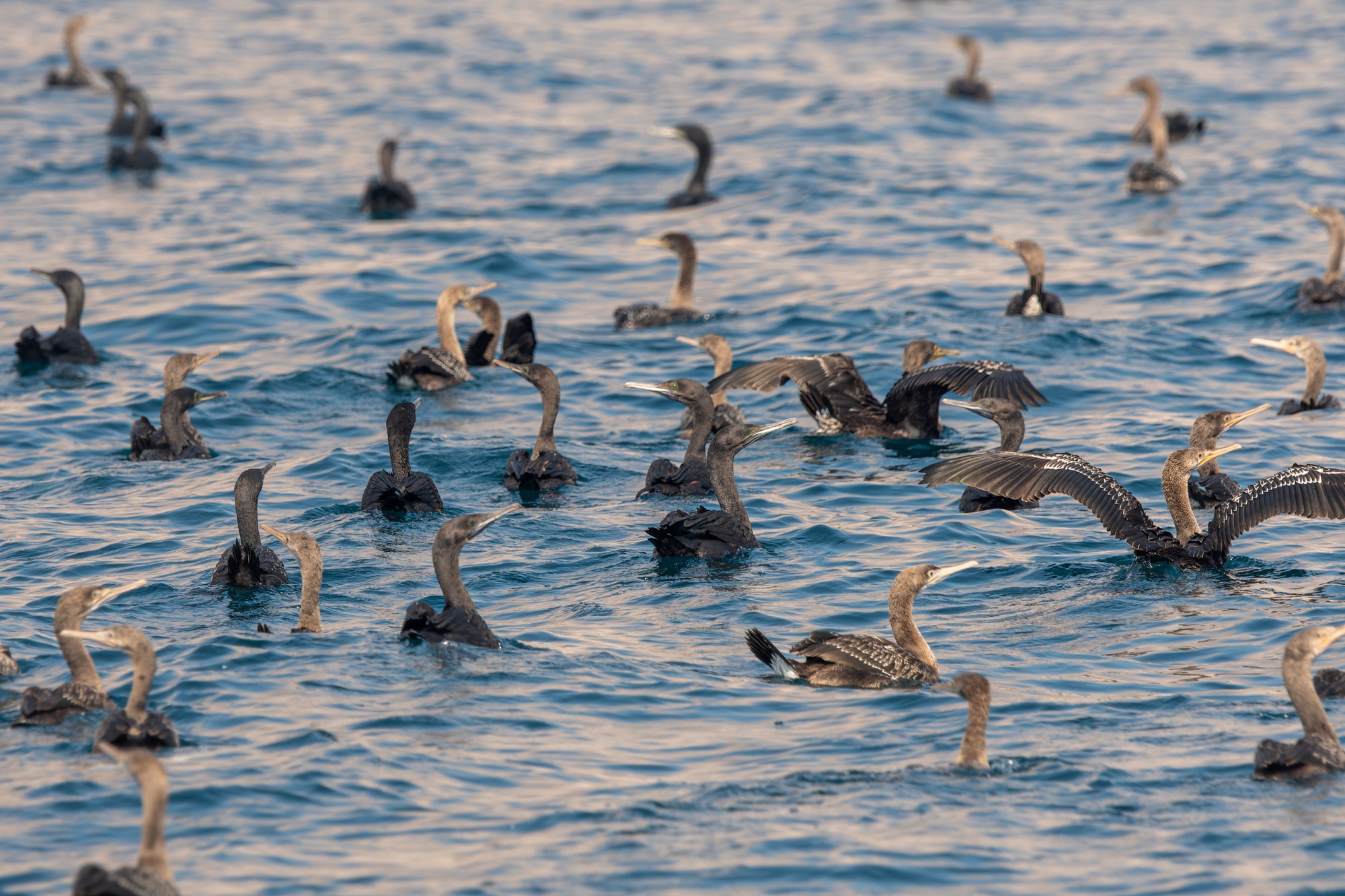MUSANDAM Birding sites
MUSANDAM

Musandam is like no other region in Oman or Arabia. The spectacular coastal cliffs plunging straight into the sea create fjords that are more reminiscent of western Norway than the desert landscapes most people associate with Arabia. A quick look at a map of Arabia will show Musandam as forming part of a land bridge between Arabia and central Asia and indeed, parts of mainland Musandam is less than 60km from the Republic of Iran. On rare, clear days the mountains of Iran are clearly visible. This topography attracts migrant birds, especially in spring, and some exciting discoveries have been made here. Access from Muscat is not straightforward if you plan to drive, as
Musandam is separated from the rest of Oman by a strip of the United Arab Emirates, a drive from Muscat will require leaving Oman, entering UAE, leaving UAE and entering Oman again, thus passing four border posts and the same number on the return journey. Car insurance coverage for the trip through UAE will be required, as well as a multi-entry road pass for resident birdwatchers. For visiting, foreign birdwatchers it is important when entering Oman, to do so on a single entry visa, rather than a multiple entry visa. This is because multiple entry visas require that the visa holder remains outside Oman for a minimum of three weeks between visits. So in order to visit Musandam, the visitor must purchase single entry visas at each border crossing.
By far the easiest way to visit Musandam from Muscat is to take the one-hour daily flight to Khasab with Oman Air, which currently departs at 07:40 in the morning. And there are numerous hotels to suit any budget, along with a rental car office at the airport.
Use of the map above courtesy of Jens Eriksen & The Birdwatching Guide to Oman. To purchase a PDF of this excellent site guide please email Jens Eriksen at: hjoman@gmail.com (EUR 15).
AL WAYM FIELDS
The closest site to the airport when you arrive and quite probably the first site you will visit. This is a delightfully secluded location on the edge of Khasab town and a short 6 minutes drive from the airport. Some of the fields are heavily irrigated and you will need to explore this rather small area and you will pretty quickly get a feel if there is anything around. Birds tend to perch on the fences and water sprinklers and you will find Pied Wheatears like this area, along with a variety of shrikes and other migrants.
TO VISIT AL WAYM FIELDS:
GPS Co-ordinates to park your car along very quiet lane and explore by foot: 26°11'06.6"N 56°15'20.5"E
ALSO CHECK THE GENERAL KHASAB eBIRD HOTSPOT INFO: Khasab Area
SALL ALA PARK

Just a 20 minutes drive from the airport, this is one of the main sites in Musandam. The graded road southeast of Khasab runs through a wide, open wadi known as Wadi Sall Al Ala. After 12 km from the turnoff, a relatively well-wooded plain called Al Khalidiyyah comes into view on the right. This plain can be flooded after rain, but is usually barren of any undergrowth due to over-grazing by goats. A picnic site with a children’s playground is found at the centre of the woodland. Nevertheless, the trees attract many migrants and winter visitors. Eastern Pied Wheatear is regular, together with Plain Leaf Warbler, which can be common from November to March, with up to 30 birds present. Arabian Grey Shrike breeds during the winter months. Spring migration in April is an exciting time and the woods may hold White-throated Robin and various buntings though Common Redstart will probably be the most numerous. The nearby grassy plains attract hovering Lesser Kestrel at this time as well. The autumn migration has not been well studied, but a Grey Hypocolius was once seen in late November. Chukar, Sand Partridge, Striated Scops Owl and Little Owl are resident in the surrounding hills.
TO VISIT THE eBIRD HOTSPOT INFO: Sall Ala & Park
ALSO CHECK THIS eBIRD HOTSPOT INFO: Sall Ala
AS SAYH PLATEAU

As Sayh Plateau at 1,200 m in the Musandam mountains is probably the most exciting bird-watching site in the region. The plateau is a flat, grassy plain surrounded by steep hillsides. Access is by 4WD along the steep, twisting road from Khasab passing right by the plateau 16 km after the Sall Ala turnoff. The drive up is very bumpy and is mainly a dirt track with a precipitous drop on one side, so please drive carefully. Do not drive on the plateau itself as it may destroy the fragile vegetation and is not appreciated by the locals. On foot the whole plain and surrounding hillsides can be explored freely. The small, fenced-in plots of agriculture are particularly interesting places to look for birds and just about anything may turn up during migration, with shrikes, flycatchers & buntings perching anywhere on the fences.
Resident species include Chukar and Sand Partridge on the surrounding hillsides and there is usually a pair of Little Owls near the north end of the plateau. The most exciting time is during spring migration and mid-April has proven particularly good. Common Cuckoo is calling from the hills and may breed. The following species, regularly recorded in spring, give an idea of the potential of this site: Lesser Kestrel, Kestrel, Saker Falcon, Pallid Swift, Tree Pipit, Rufous Bush Robin, White-throated Robin, Black Redstart, Common Redstart, Whinchat, Northern Wheatear, Pied Wheatear, Red- tailed Wheatear, Rock Thrush, Blue Rock Thrush, Isabelline, Turkestan, Red-backed, Woodchat and Lesser Grey Shrike, and Cinereous, Grey-necked, Black-headed and Ortolan Bunting, in addition to common resident species. Other regular spring migrants have included various species of warblers, Semi-collared Flycatcher and Masked Shrike. Even a Grey Hypocolius has turned up. Though spring migration peaks in April, earlier and later dates should also prove interesting, but little is known at present. In winter Eversmann’s Redstart is a regular visitor in small numbers as are Blue Rock Thrush and Song Thrush. Clearly, the area is worthy of further exploration and exciting discoveries will surely be made.
Farther up the road a small plateau is reached after 5 km before the road peaks at 1,700 metres at the radar station. Small plots and bushy wadis are also found in this area, and regularly hold migrants. Hooded Wheatear is uncommon but regularly recorded anywhere in this region. These areas warrant further exploration and make for good camping sites.
TO VISIT THE eBIRD HOTSPOT INFO: As Sayh Plateau
COASTAL ROAD FROM KHASAB

The above sites will be your primary focus but you can drive the main coastal road west that takes you into the UAE. The scenery is spectacular and you will see numerous Socotra Cormorants that breed on nearby cliffs. There are some small tidal flats that could hold an odd shorebird and there are numerous pull-ins and car parks where you can stop to scan. But please note this road can be very busy. it's possible to find anything along this road, with Variable Wheatear recorded in April 2025. You could take one of the numerous Dhow cruises into the fjords, which will give you an outside chance of Sooty Tern amongst other species.
